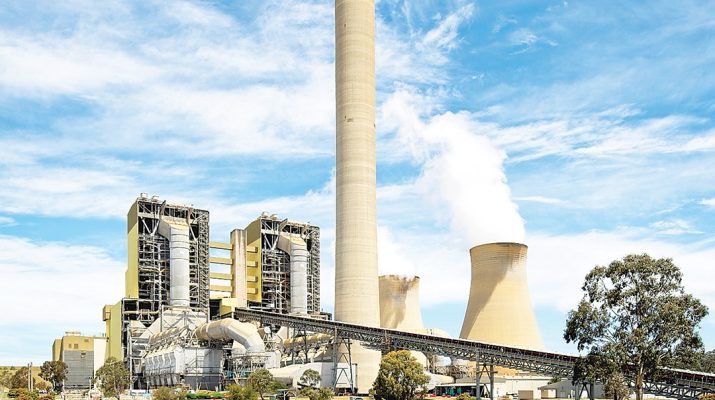Philip HOPKINS
THE operation of a nuclear power plant is not that much different from a coal plant, a nuclear expert panel told the forum at the Italian-Australia Club in Morwell.
“A coal plant uses a hot rock – coal – to boil water, to make steam, to turn a turbine to make electricity,” said Mark Schneider, who has 23 years’ of experience in the nuclear sector, having worked with eight nuclear reactors, including in the US Navy on aircraft carrier and submarines. He is part of Ms Stanke’s team in Australia.
“A nuclear reactor uses hot rock, this case uranium, to boil water, to make steam, to make electricity. They are the same thing. The cooling source for a nuclear reactor can be the same cooling source for a coal plant. You have the Latrobe River cooling the coal plants here, right? You could use that water to cool a nuclear reactor. I used the ocean when I worked on a submarine and aircraft carrier.”
Mr Schneider, who has a Bachelor degree in nuclear technology, is Group Chief Nuclear Officer for UBH Group in Australia. Unlike Grace (Stanke), “I was born a nerd,” he said, inspired by a school physics teacher after a particular lesson.
“That’s what I want to do, work in nuclear power.”
Unluckily for him, the nuclear reactor in his home state of Oregon was closed down after protests – 900 jobs lost, “good union jobs, highest paying union jobs, the highest on the planet”.
Luckily for him, the navy recruiter came along. Asked whether he wanted to join the navy, “being a spiteful 17-year-old kid, I said, ‘Only if you have nuclear-powered ships’. The recruiter answered, ‘Boy have we got a job for you!’
“At 19 years old, after a couple of years of nuclear training, I am operating a nuclear reactor, in a converted submarine for training purposes; I am breaking atoms at 19 years old,” he said.
“As I withdraw those rods and doing calculations… going through my mind what they have told me in two years’ of training, ‘If I stuff this up, I shut down the six most powerful navies on the planet, I shut down 10 per cent of electricity for the world’ – that goes through every sailor’s mind as they operate a nuclear reactor. Safety is paramount.”
Mr Schneider said there’s a famous quote from Admiral Hyman Rickover, the father of the US nuclear navy. He was standing in San Fransisco Bay when the USS Enterprise was coming in. Asking a certain politician what he saw, the politician said, ‘I see a beautiful warship’. The admiral said, ‘What you don’t think about is the eight 19-year-old kids operating a nuclear reactor’, Mr Schneider said.
Safety measures in a nuclear station are embedded in everyday work practice – protective padded clothing, fire equipment, equipment protected against radiation.
“We try to figure out how we can minimise our own radiation exposure and prevent exposure to the public,” he said.
Kirsty Braybon, also part of Ms Stanke’s team, is the Adjunct Nuclear Law Lecturer at the University of Adelaide, and a special adviser on AUKUS-related matters.
“We have a prohibition (on nuclear) at nuclear level,” she said, a result of a political deal decades ago when the government was trying to build the Opal reactor for medical science in Sydney. With little debate, an amendment was passed to ban nuclear energy and uranium enrichment.
“We needed nuclear medicine, there was no ambition for nuclear energy, and there was concern about Chernobyl,” she said. “Decades later, we are having this discussion to lift that ban. There are state bans as well; there is one here in Victoria as well. It’s a political game. It’s not about public policy.”
Ms Braybon said the prohibition was recently amended to include submarines under AUKUS.
“Nuclear law government covers safety, like coal, but extra protections are in place to manage radiation,” she said.
“It (nuclear law) governs how much uranium we have, where it is, where it’s going. That is to manage nuclear security, to ensure no one is going to take that material and do anything silly with it.”
Ms Braybon said there were international safeguards. “Countries, including Australia, report back to the International Atomic Agency, on how much nuclear material and technology we have, where it is and where it’s going. An international system is in place to record all this stuff. We do that today,” she said.
The Agency comes to Australia and checks our plant and uranium mines.
“We know where every gram of uranium is going. All laws are in place just to manage additional risk to nuclear. All is manageable in Australia.”
Questioned whether there was a realistic chance of lifting the prohibition, Ms Braybon said “it comes down to the numbers” in Parliament.
“Public sentiment – if the community thinks there is a social acceptance to nuclear energy in Australia, it helps change the mind of politicians who have to represent the voters,” she said.
Mr Schneider said that in West Virginia – coal country in the United States – in the last couple of years, they had lifted their nuclear ban.
“So, it is possible,” he said.


